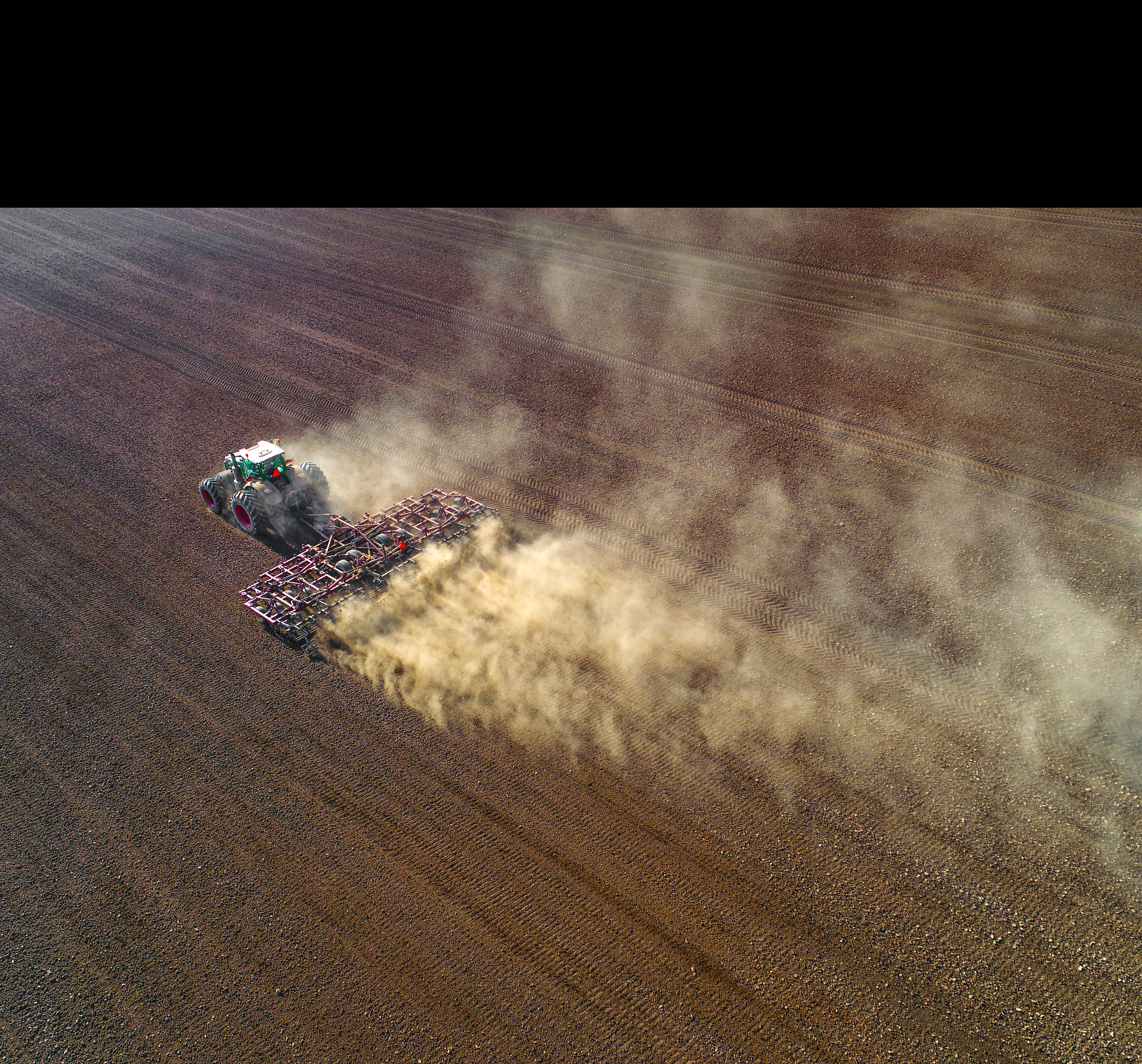
The chisel plow produces a rough surface and generally leaves 50 to70% of the existing corn or grain sorghum residue on the surface depending on chisel point selection, shank spacing, operating speed, and depth. Straight, narrow points, about 2" wide, leave the most residue. However, following crops that leave fragile residue, even narrow points bury too much residue to provide adequate protective cover.
Where erosion is not a primary concern, 3- or 4-inch wide, twisted points invert more soil and bury more residue. In the western Corn Belt, wide sweeps are sometimes used on a chisel plow in wheat residue to undercut weeds and leave residue on the surface.
Typically, chiseling is performed in the fall and is followed by one or more secondary tillage operations in the spring. The fall operation cuts and incorporates some of the residue, making it more susceptible than undisturbed residue to decomposition and over-winter weathering. Partially decomposed residue is easily broken and covered by secondary tillage operations, negating much of the effect of having selected chisel points which leave more residue.
On many soils, a single pass in the spring with a disk, field cultivator, or combination tillage implement provides limited pesticide and fertilizer incorporation on fall chiseled fields. A second tillage pass provides more complete incorporation, but can decrease residue and erosion control.
Spring chiseling affords erosion control during the winter and allows extended grazing of stalks. However, soil moisture evaporation following spring tillage can result in yield reductions, particularly in lower rainfall areas. Spring chiseling may also produce clods that could require additional tillage operations to prepare a suitable seedbed.
A chisel plow may clog in extremely heavy or wet residue unless stalk shredding or light tillage precedes chiseling. This additional operation increases fuel and labor requirements. Several combination tillage implements have coulters or disks mounted in front of the chisel shanks which often eliminate the need for a pre-chiseling operation. The coulters or disks are operated just deep enough to cut the surface residue. This reduces the chance for residue clogging in the chisel area. The shank spacing on these machines is usually 15 inches compared to 12 inches for a conventional chisel plow.

